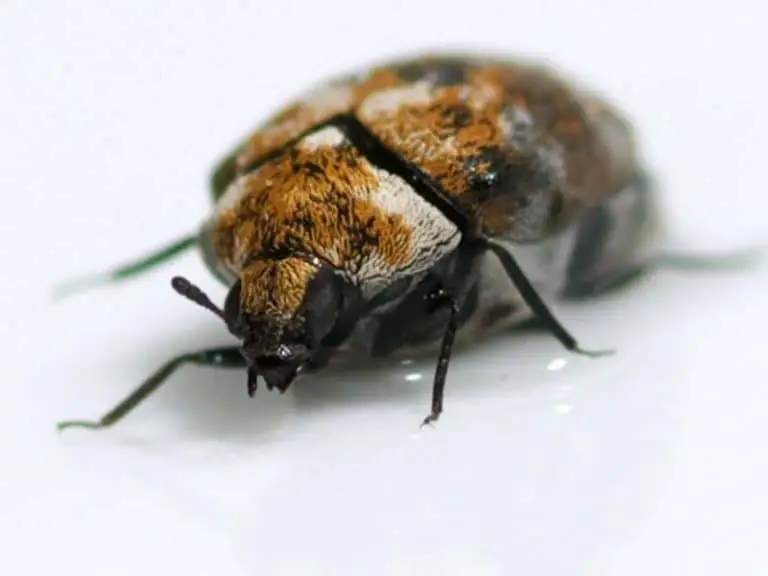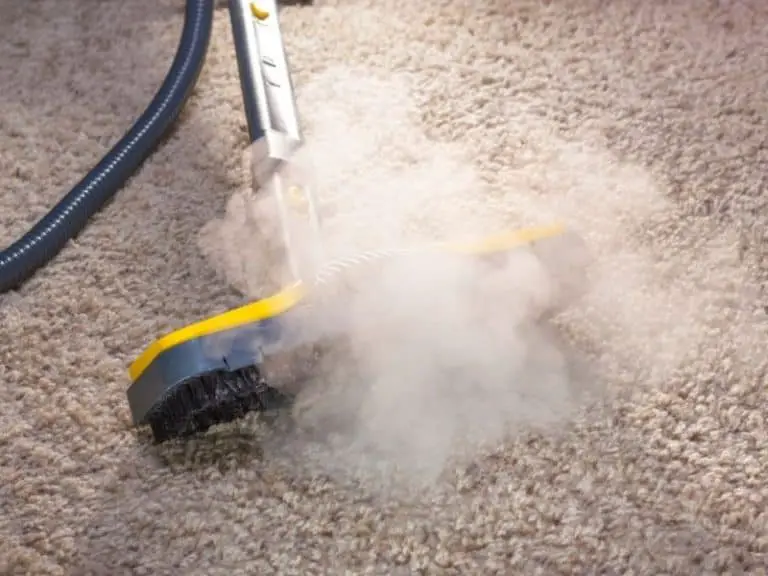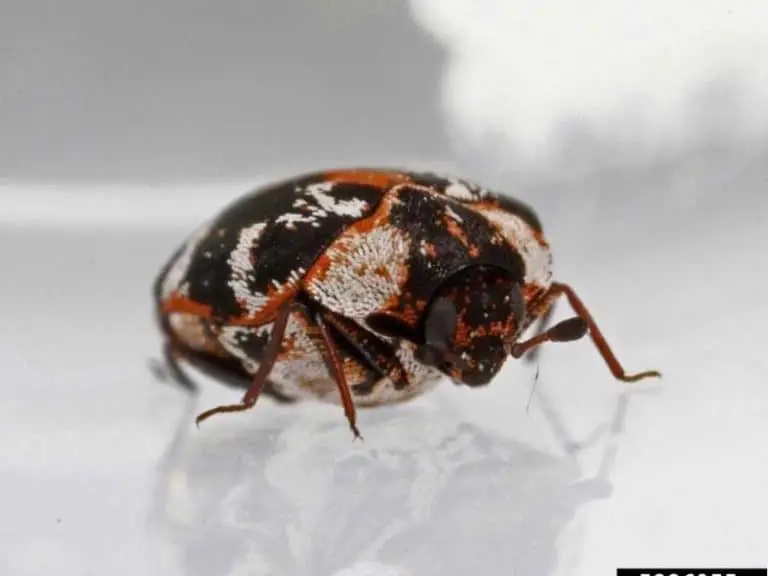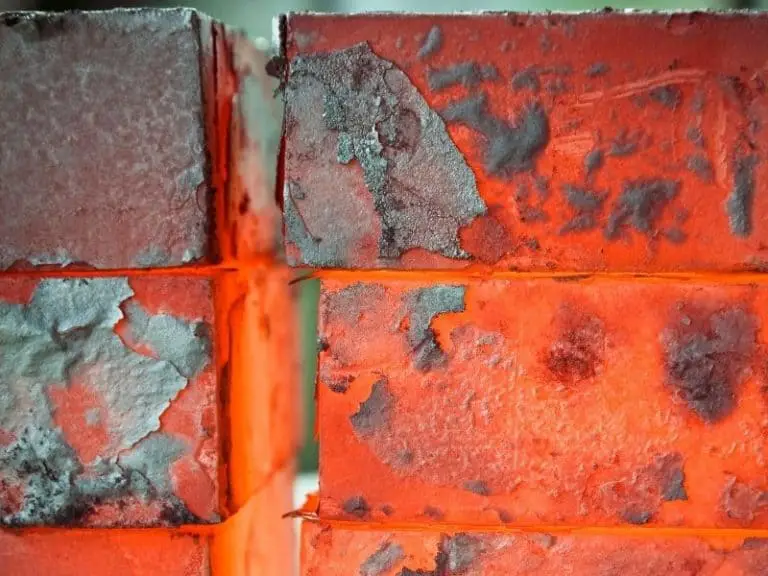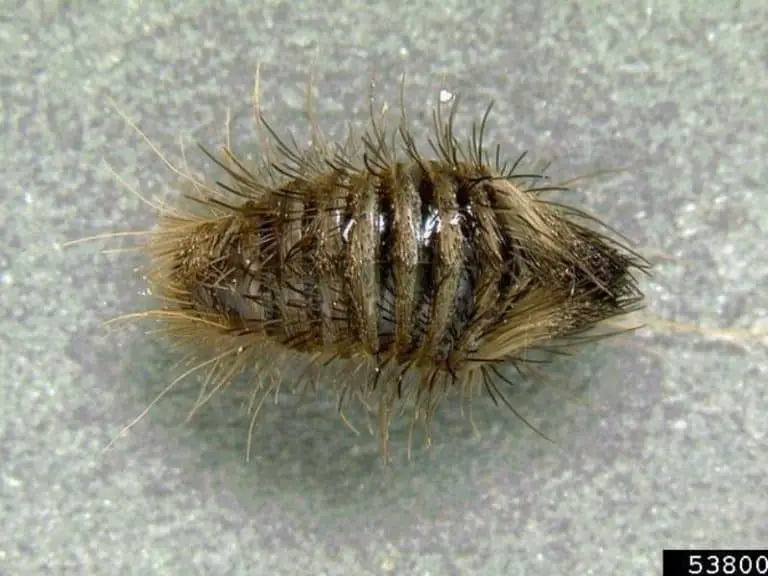Surprising Things That Carpet Beetles Eat Besides Carpet
Often, carpet beetles are mistaken for bed bugs. However, they are completely different pests, especially when it comes to their diet. Bed bugs only eat blood. On the other hand, carpet beetles, particularly larvae carpet beetles responsible for a home infestation, have a surprisingly diverse diet.
Carpet beetles eat just about anything that’s organic. They consume carpets, rugs and other items with natural fibers such as clothes, soft furnishings, and upholsteries. They eat human and pet hair, paper, and dead insects, too. Carpet beetles are also pantry pests as they eat pantry foods.
Most of the time, the first sign of a carpet beetle infestation is damage to household goods and clothes out of materials that larvae carpet beetles love to eat.
Unlike many insects that can spread diseases, larvae carpet beetles do not wreak havoc on the health, except in some people who are allergic to the hairs covering their bodies.
However, they can cause damage to one’s belongings. The damage can range from mild to substantial, depending on the severity of the infestation.
If you want to find out what do carpet beetles eat, continue reading!
Carpets and Rugs
Why are carpet beetles called “carpet beetles”?
Well, they are called as such because leading the list of their favorite foods are carpets.
It’s important to note, however, that they will only eat carpets that are completely or partly out of natural fibers. Some examples are wool, cotton, linen, and silk.
Larvae carpet beetles won’t touch carpets that are totally out of synthetic fibers or materials.
This is why opting for them is a wonderful idea. This is especially true if you live where carpet beetles are quite common.
While carpet beetles can be found all over the US, they are usually more widespread in colder states.
Refrain from assuming that carpets are the only ones in grave danger if there are larvae carpet beetles in your home. Rugs that are out of natural fibers or contain some of them are also carpet beetle foods.
Going for carpets and rugs out of natural fibers is the pride and joy of many homeowners. It’s no secret that they tend to look eye-catching. More importantly, they tend to feel amazing to the touch.
Unfortunately, human beings are not the only species that love luxurious carpets and rugs. Larvae carpet beetles are also fond of them!
This is why you have to carefully weigh the pros and cons of installing natural and synthetic carpets and rugs.
If it’s more important that your home is free of carpet beetles, opting for synthetic ones is highly recommended.
But if adorning your home with carpets and rugs out of natural fibers is the only option, worry not. Just make sure that you spring into action as soon as you realize that larvae carpet beetles are around.
Sadly, most of the time, their presence is discovered only when it’s too late!
Clothes With Natural Fibers

Just because the word “carpet” is in the name of carpet beetles doesn’t mean that carpets are the only ones that these pesky creatures will eat.
There’s something about larvae carpet beetles that you need to know. It’s none other than the fact that their diet is astonishingly diverse!
Do carpet beetles eat clothes? They certainly do! But only if they are out of materials that they like.
Needless to say, clothes that are out of natural fibers are in danger. This is true for those that are totally out of natural fibers or only partly out of them.
Most people love clothes that are out of cotton. It doesn’t come as a surprise because cotton feels good against the skin.
What’s more, they help keep the body stay cool and comfy. Cotton does that in a couple of ways. First, it is a highly breathable fabric. Second, cotton absorbs sweat very well.
If you’re asking, “do carpet beetles eat jeans?” The answer is yes, they eat jeans. Believe it or not, jeans are out of cotton fibers that are woven in a certain manner. Denim is the name of the resulting fabric.
Larvae carpet beetles love cotton clothes, too. However, they love eating them, not wearing them.
Carpet beetles eat cotton and many other natural fibers. Some common examples include wool, silk, rayon, cashmere, flax, and pashmina.
If your clothes and fashion accessories are out of these natural fibers, then it’s very much likely that they will be marred with holes if there are larvae carpet beetles in your home.
Speaking of fashion accessories, those that are out of genuine leather are also delectable foods for carpet beetles. So, in other words, leather bags, belts, shoes, and others are in grave danger as well!
Pillowcases, Bedsheets and Towels
Clothes are not your only belongings that are out of natural fibers. Many of your soft furnishings are also out of cotton, wool and others that larvae carpet beetles love to feast on.
Put simply, soft furnishings are home items that are out of cloth. They are designed to make a room look better. Also, they are meant to increase the functionality of existing pieces of furniture.
For instance, cushions and throw pillows, both of which are soft furnishings, help make it more delightful to look at and use your couch.
Cushions and throw pillows can be stuffed with natural or animal products. Some of them are cotton, wool, down and feather. If they are stuffed with those, they are unsafe!
Some other examples of soft furnishings include:
- Pillowcases
- Bed sheets
- Blankets
- Comforters
- Curtains
- Drapes
- Loose covers
- Bean bags
- Shower curtains
- Bath towels
- Dish towels
- Tablecloths
Most soft furnishings are better if they are out of natural fabrics. Unfortunately, this makes them irresistible to larvae carpet beetles.
If you fail to put an infestation to an end, it’s very much likely for many of your soft furnishings to end up with holes that get bigger and bigger as the appetite of growing carpet beetles gets better and better.
By the way, mattresses are also soft furnishings. And those that are out of natural fibers serve as larvae carpet beetle foods, too.
Bed bugs, on the other hand, only hide in mattresses. They do not eat mattresses because they only eat blood. Particularly, it’s the blood of human beings that lie on mattresses that they consume.
The solution?
When shopping for soft furnishings, limit those that are out of natural fibers.
Upholstered Parts of Furniture
Do carpet beetles eat wood?
No, larvae carpet beetles, even adult ones, do not eat wood. They are nothing like termites, carpenter bees, and carpenter ants.
According to experts, these pests are the ones responsible for numerous structural damage problems in the US. If a structure is out of wood, they can harm it.
Carpet beetles, on the other hand, do not damage wood. It’s true that wood is a natural material, just like many of the things that larvae carpet beetles love to eat.
However, they are simply too challenging to bite into and digest for carpet beetles. That is why they stick to softer all-natural materials.
This does not mean, however, that your furniture pieces out of wood are out of harm’s way.
If a piece of furniture is out of wood and has upholstered parts, then it’s on the menu of larvae carpet beetles. Those hairy pests will devour the soft parts of a wooden item.
This is especially true if those parts are out of or stuffed with natural materials. By causing holes and tears, upholstered furniture can be marred by larvae carpet beetles.
Earlier, it was mentioned that leather is something that carpet beetles find delicious.
Well, leather chairs and sofas have wooden frames. Larvae carpet beetles will only munch on the leather parts and the stuffing, too, if they are natural or animal-based.
The wooden parts, on the other hand, will be left untouched.
Keep in mind that larvae carpet beetles love genuine leather only. If your upholstered leather furniture is out of synthetic leather, then those common household pests will not eat them.
Human and Pet Hair
Think again if you believe that head lice are the only ones that can live on your head.
There are also some other insects that can set up camp in your hair. As a matter of fact, some of them can damage your mane, too.
Head lice love to stay in your hair because it gives them easy access to their favorite food. It’s none other than blood from your scalp. Bed bugs also thrive on your blood.
However, they prefer to drink blood from other areas of your body. That’s because the hair on your head can get in their way.
Aside from head lice, larvae carpet beetles can also stay on your head. However, it’s not the blood from your scalp that they are after. Rather, it is your mane why they might settle in your hair.
What they love about your hair is keratin. A type of protein, keratin is what your hair is made of.
By the way, it’s also keratin wool, cotton, silk and others why larvae carpet beetles eat natural fibers. So, when talking about what do carpet beetles eat, your hair is on the list.
There are a couple of other reasons why larvae carpet beetles love to live on your head.
First, the oils produced by your scalp, which are for protecting and moisturizing the scalp. Second, the skin flakes on your scalp.
So, will carpet beetles eat my hair?
Yes, they will.
Usually, it’s when you are catching some shut-eye when they will do so. Larvae carpet beetles do not like to be disturbed when they are eating.
This is why they will usually feast on your mane when you are lying still in bed.
Aside from the hair on your head, larvae carpet beetles can also eat hair elsewhere on your body.
By the way, it’s not just your hair that those hairy pests love to eat. The hair or fur of pets is also their favorite.
This is why it is possible that larvae carpet beetles are the reason why cats and dogs are scratching excessively.
Needless to say, ticks and fleas are not the only ones that can leave them feeling itchy.
Books and Other Paper Products

Do you consider yourself a bookworm, and that is why you have an impressive collection of books?
Then having a carpet beetle infestation can put your treasured possessions in danger.
That’s because you can think of them as literal bookworms, or insects that eat books.
Some common bookworms include silverfish, ants, termites, and some species of cockroaches and moths.
There are also many types of beetles that eat books. Some examples include auger beetles, bark beetles, long-horned beetles, and skin beetles.
Larvae carpet beetles are some of those beetles that can wreak havoc on your literary treasures.
What they are attracted to particularly are the cloth covers of books. If those cloth covers are completely or partially out of natural fibers, then larvae carpet beetles will devour them.
They are also attracted to the glue used for holding the covers and pages together. This is especially true if the glue contains organic ingredients, such as starch.
But do carpet beetles eat paper? Yes, they also eat paper.
This is exactly the reason why it’s not just books that are at risk, but also other paper products.
Pantry Foods
Indian meal moths, weevils, cigarette beetles, saw-toothed grain beetles.
These are some of the most common pantry pests. Sometimes referred to as “stored product pests”, they eat dried and processed foods that are usually stored in homes, in particular pantries.
Despite what they’re called, carpet beetles can be pantry pests, too. Some of the things they like to eat are:
- Flour
- Cornstarch
- Powdered milk
- Uncooked pasta
- Crackers
- Dried fruits
- Nuts
- Seeds
- Spices
Larvae carpet beetles have teeth that are strong enough to create holes in food packaging.

Needless to say, one of the telltale signs that they have invaded your pantry is the presence of holes in boxes and plastic packaging.
It’s when a female adult carpet beetle accidentally ends up inside the pantry and lays eggs there that can cause larvae carpet beetles to have a party in your pantry.
It only takes one pregnant carpet beetle to start an infestation in your pantry. This is especially true since female carpet beetles can lay up to a hundred eggs at once.
According to health authorities, larvae carpet beetles are not known to carry harmful germs.
However, it doesn’t mean that it’s perfectly fine for them to munch or crawl on pantry foods.
That’s because you may end up with a digestive issue if you happen to ingest their hairs or larvae carpet beetles themselves.
Some of the things that you may experience include abdominal pain and loss of appetite.
To protect pantry foods from larvae carpet beetles and other pantry pests, it’s a great idea to store them in glass or plastic containers. For best results, opt for those that have an airtight seal.
Dead Insects
Pest control professionals say that you should keep your home clean if you want to get rid of carpet beetles. Doing so helps eliminate some of the treats they can find indoors. They’re none other than dead insects.
Just like natural fibers, animal products and your hair, dead insects are organic matters.
Failure to keep your home spick and span all the time can make it tempting for pregnant female adult carpet beetles to lay their eggs inside your home.
That’s because they know very well that their babies have plenty of dead insects to eat. Regularly vacuuming your home helps remove dead insects before they serve as food for larvae carpet beetles.
Using a vacuum cleaner also helps get rid of other things that those creepy crawlers love to eat, too. Some of them are loose human and pet hair, lint, and bits of food.
Aside from dead insects, larvae carpet beetles also consume dead animals.
What they love about dead animals are the leather and fur parts. If there’s a dead animal trapped in the vent, duct, or ceiling or wall void, chances are that larvae carpet beetles will find and eat them.
Just Before You Get Rid of Carpet Beetles
The reason why larvae carpet beetles infest homes is that there are plenty of foods for these hairy critters in there to feed on.
They range anywhere from carpets, clothes, soft furnishings and upholstered furniture. It can be surprising to learn that they also consume human and pet hair, paper products, pantry foods and dead insects.
What do carpet beetles eat? Especially if your home is prone to a carpet beetle infestation, it’s important that you know the answer to this question very well.
Limiting the number of items that larvae carpet beetles will love to consume can make them less likely to survive inside your home.
Opting for as many clothes and other household goods out of synthetic fibers or materials as possible can help considerably limit the damage that carpet beetles can cause.
Photo credit:
Ryan Jones, Colonial Williamsburg Foundation, Bugwood.org
Clemson University – USDA Cooperative Extension Slide Series , Bugwood.org
Gary Alpert, Harvard University, Bugwood.org
Medical Disclaimer: TheHomePestControl is a digital publisher and does not offer personal health or medical advice. The contents of this website are not intended to substitute for professional medical advice, diagnosis, or treatment.
Affiliate Disclaimer: As an Amazon Associate, I earn from qualifying purchases made on our website. If you make a purchase through links from this website, I may earn a commission at no additional cost to you.

